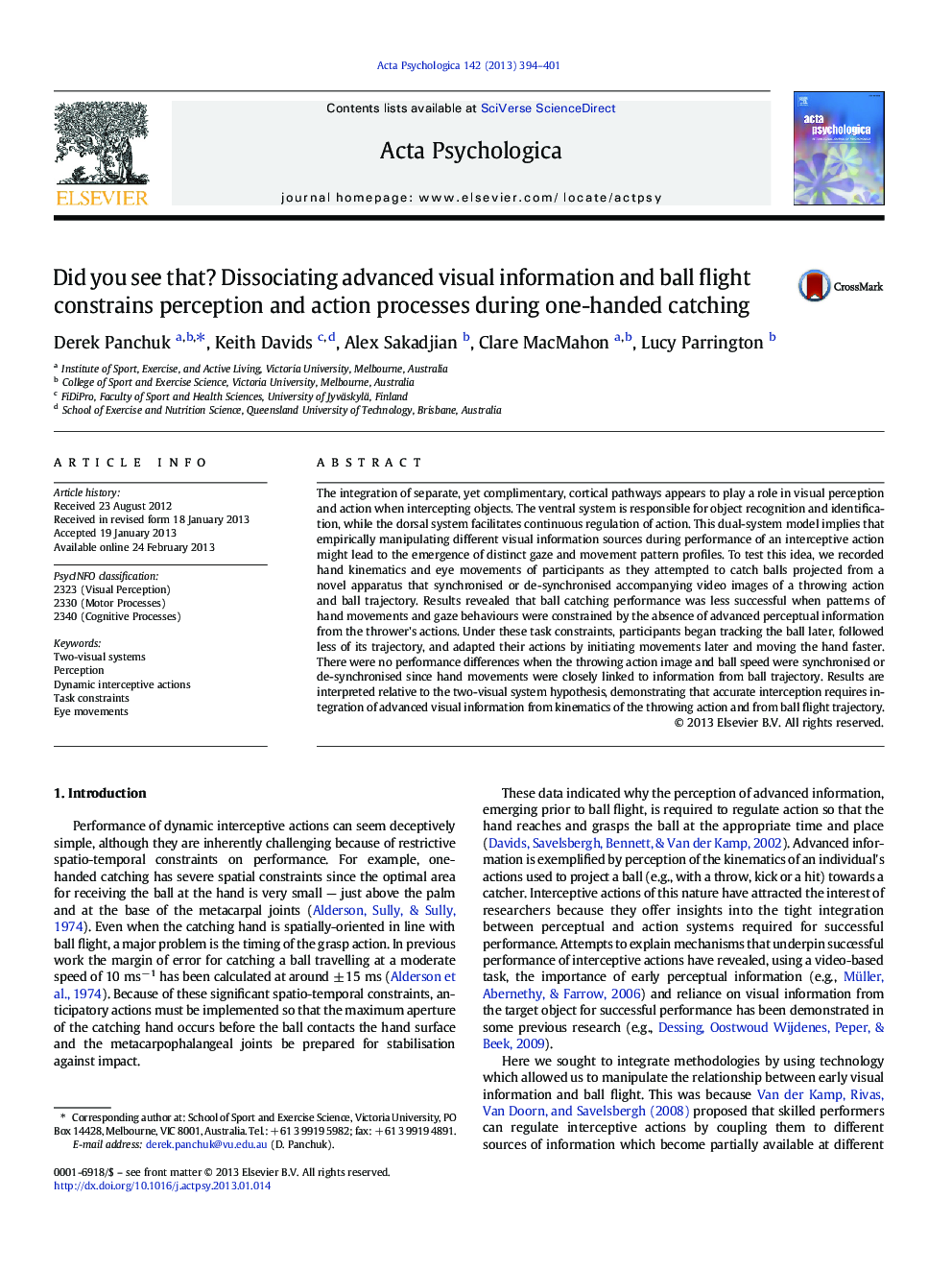| Article ID | Journal | Published Year | Pages | File Type |
|---|---|---|---|---|
| 919823 | Acta Psychologica | 2013 | 8 Pages |
The integration of separate, yet complimentary, cortical pathways appears to play a role in visual perception and action when intercepting objects. The ventral system is responsible for object recognition and identification, while the dorsal system facilitates continuous regulation of action. This dual-system model implies that empirically manipulating different visual information sources during performance of an interceptive action might lead to the emergence of distinct gaze and movement pattern profiles. To test this idea, we recorded hand kinematics and eye movements of participants as they attempted to catch balls projected from a novel apparatus that synchronised or de-synchronised accompanying video images of a throwing action and ball trajectory. Results revealed that ball catching performance was less successful when patterns of hand movements and gaze behaviours were constrained by the absence of advanced perceptual information from the thrower's actions. Under these task constraints, participants began tracking the ball later, followed less of its trajectory, and adapted their actions by initiating movements later and moving the hand faster. There were no performance differences when the throwing action image and ball speed were synchronised or de-synchronised since hand movements were closely linked to information from ball trajectory. Results are interpreted relative to the two-visual system hypothesis, demonstrating that accurate interception requires integration of advanced visual information from kinematics of the throwing action and from ball flight trajectory.
► We investigated the dual visual systems hypothesis during an interceptive action. ► With no visual information, gaze behaviours and hand kinematics changed significantly. ► Gaze was unaffected by a dissociation of advanced visual information and ball speed. ► Movement kinematics were linked to ball speed, not advanced perceptual information. ► Accurate interception requires integrating advanced and ball trajectory information.
